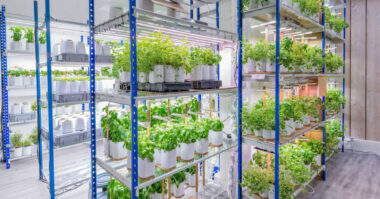In nature, plants find in the soil all the nutrients necessary for their development. To understand this phenomenon, let’s look at the dead cover, so rich, of a forest. This litter is composed of leaves (precisely!), twigs, waste… All this matter will be broken up, fragmented, crushed by numerous auxiliaries (molluscs, carabids, springtails…), then buried and decomposed in the soil.
The micro-organisms will then transform the molecules of the organic matter into a precious substance, called humus. It is this blackish matter that will agglomerate with the clay to form a complex that captures the mineral elements, then absorbed by the plants as they need them.
Contents
How long does it take for a leaf to decompose?
In the forest, the layer of dead leaves is quite thin. It is deposited on the ground where it is in contact with many micro-organisms. It also offers a large surface to the rain. This explains why the decomposition of leaves takes place in only a few months, during winter and spring.
The complete decomposition of a leaf takes 6 to 12 months, and the decomposition of leaves that are under others layers of dead leaves takes about 2 or 3 months!
How to make good use of leaf decomposition?
In nature, plants find in the soil all the nutrients necessary for their development. To understand this phenomenon, let’s look at the dead cover, so rich, of a forest. This litter is composed of leaves (precisely!), twigs, waste… All this matter will be broken up, fragmented, crushed by numerous auxiliaries (molluscs, carabids, springtails…), then buried and decomposed in the soil.
The micro-organisms will then transform the molecules of the organic matter into a precious substance, called humus. It is this blackish matter that will agglomerate with clay to form a complex that captures mineral elements, which are then absorbed by plants as they need them.
This is why it is precious to collect the leaves to make a free and excellent quality soil.
Collecting dead leaves
Collect leaves preferably when they are wet. However, they should not be waterlogged. Once formed, the leaf patties are a difficult dish for small animals to break down.
Of course, you can pick them up with a rake… or you can make it easier by using a mower equipped with a bin. Leaves mixed with grass clippings produce a nitrogen-rich mixture that decomposes more quickly.
Shredding dead leaves
Some thick or tough leaves take a long time to decompose. Before mixing them with other leaves, they should be shredded. If you don’t have a shredder, spread the leaves on a plastic sheet and then run the mower over them.
Stirring up the dead leaves
The leaves should now be piled up in the shade in a compost bin or, more simply, in a silo made of wire mesh stretched over stakes. Between each layer of dead leaves, about 20 cm thick, spread organic matter rich in nitrogen: dried blood, roasted horn, poultry droppings…
Also add some old leaf compost and natural compost activators, such as comfrey or nettle, either directly in the form of fresh leaves or as a slightly diluted slurry.
Composting dead leaves
As with any compost, make sure that the pile of leaves always remains slightly damp and well aerated. After 6 months, turn it over and enrich it with the same nitrogenous materials mentioned in the previous step. It will be usable after one year. If you wait 2 or 3 years, you will obtain a real leaf compost.
All you can do with decomposing leaves
An insulating blanket
You can already make an insulating cover for the most fragile plants. If they are quite dry, you can for example spread them on the foot of the banana tree (at least 50 cm, refillable in a month because the leaves will settle) that you will then cover with a plastic sheet, maintained by logs.
This way, the stump will be warm and dry and will not suffer from the winter. The same goes for agapanthus and even dahlias and gladioli if you decide to leave them in the ground. To do this, pick them up after several days without rain.
An ideal mulch
You can also use them as a mulch of choice. Spread them on your beds, taking care to clear the area around the perennials. This way, the roots will be protected and the heart of the clumps will be aerated. The micro-organisms in the soil and the earthworms will break down the leaves and bury them in the soil.
In the spring, the surface layer of the soil will have become as lumpy as possible. In the vegetable garden, all the remaining vegetables (cabbage, asparagus, artichokes, leeks) will appreciate this insulating cover.
A perfect compost
You can also put them on the compost heap. Ideally, you should mow the grass. The fermentation of the grass clippings accelerates the decomposition of the shredded leaves, even those of plane trees, which are reputed to be rot-proof. You can also mow leaves that are too tough, such as those of evergreen magnolias, plane trees, and the needles of conifers. They will be shredded and decompose as quickly as the others.
A free leaf compost
If you put them, slightly damp, in large solid 100 l bags, pierced with a spade fork with about ten holes, then closed and stored behind the garden shed, you will find next March a wonderful leaf compost, which you can incorporate into the planting soil.
Its quality will not be inferior to products sold at a high price in the market. To make potting soil, collect them on a very humid day, after a rain for example.
Perfect shelters for small wildlife
Leave a few piles of leaves at the bottom of the garden, under shelters, boards for example. It would be the devil if a hedgehog didn’t decide to winter in this cozy nest. In exchange, it will get rid of slugs and snails in the spring.








